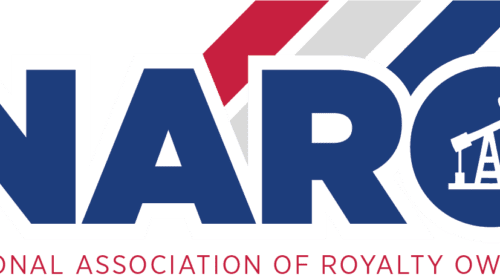The effectiveness and efficiency of an energy corporation depend strongly on the board, officers and, ultimately, on a team effort from all levels. In 2018, I spoke at several events with the presentation entitled The Digital Transformation: From the Whiteboard to the Boardroom.
It seems so simple that there would be open dialogue and discussions among corporate leaders and with all levels. However, there is nearly always a degree of improvement necessary when it comes to corporate communications from the leadership. Several from the “whiteboard” have expressed their concerns that board members in some cases are not responsive to many suggestions, ideas and solutions in the corporation’s future.
There are so many issues and concerns confronting the energy industry, from climate change to methane emissions, cyber security, digital transformation, workforce development, proper funding and infrastructure – the list goes on – in regard to the evolving energy transition. Whether a corporation is working in the Gulf of Mexico, offshore, onshore, domestically and/or internationally, the challenges are always present for corporate energy leaders.
Technologies and innovations are essential in the progress of a corporation’s success. Whether it is the future use of clean coal technology, electric vehicles, hydrogen or other forms of energy, strong leadership will be necessary in navigating the corporation’s roadmap.
One concern that I have is preparing the leaders of the future for the challenges they will face. Along with the leadership, having a strong workforce will be an even greater challenge. Therefore, I believe that STEM (science, technology, engineering and math) programs from the grade schools to the college level and technical schools will be so important.
From a firsthand perspective, I was involved as chairman and board member of the Board of Regents of the Regional University System of Oklahoma (RUSO) with the development of a major STEM project in Oklahoma. The Donald Betz STEM Research and Learning Center was opened November 14th, 2018, at the University of Central Oklahoma. The center is the interdisciplinary hub for the university’s various science, technology, engineering and mathematics programs, including biology, chemistry, engineering, forensic science and nursing. The building adds 56,000 square feet of learning space for the campus for the highly sought-after STEM majors.
There are so many STEM and similar projects throughout the nation. But I can’t emphasize enough the importance of such commitments by energy companies, communities and universities.
While communication and workforce development are vital to success at the corporation, many energy companies struggle with defining their true mission and vision. The input from all levels has to be addressed in order to reach full potential.
Strategy of the corporation starts at the top, but includes meetings and retreats, which are held to embrace all avenues of input. Many energy companies have been successful, and others have been unsuccessful, due to their strategic planning or lack thereof. The focus upon a concise strategic plan is key. Energy corporations normally are confronting continuing changes that make it difficult to incorporate the strategic planning processes.
The corporation must be comprised of the right people at the top. For the shareholders to get full value out of their investment, they must have leaders who stay up to date on energy issues, technology and other key components, and board members need to be from cross-sections of disciplines.
America needs America’s energy, and America needs strong energy leadership! For more information, go to www.MarkStansberry.com. To join our effort, go to Facebook: National Energy Talk.
Mark A. Stansberry, Chairman of The GTD Group, is an award-winning author, columnist, film and music producer, radio talk show host and 2009 Western Oklahoma Hall of Fame inductee. Stansberry has written five energy-related books. He has been active in the oil and gas industry for over 44 years, having served as CEO/President of Moore-Stansberry, Inc., and The Oklahoma Royalty Company. He has served as Chairman of the Board of Regents of the Regional University System of Oklahoma, Chairman 2016-2017 of the Gaylord-Pickens Museum/Oklahoma Hall of Fame Board of Directors, Lifetime Trustee of Oklahoma Christian University, and Board Emeritus of the Oklahoma Governor’s International Team. He has served on several public and private boards.
Oil and gas operations are commonly found in remote locations far from company headquarters. Now, it's possible to monitor pump operations, collate and analyze seismic data, and track employees around the world from almost anywhere. Whether employees are in the office or in the field, the internet and related applications enable a greater multidirectional flow of information – and control – than ever before.








